MYTHOLOGICAL WEAPONS (2017 – 2021)
A clever idea for a series, this one features the incredible weapons wielded by the Gods in their legends. Lashings of smartminted ultra high-relief are on show They’re the equal of the other series on show here, despite topping out at just two ounces in comparison to three.
The mintage of 999 is higher than the others here, so a little easier to pick up, and the price is lower, of course.
| SPECIFICATION | |
| DENOMINATION | $10 CID (Cook Islands) |
| COMPOSITION | 0.999 silver |
| WEIGHT | 62.2 grams |
| DIMENSIONS | 38.61 mm |
| FINISH | Antique |
| MODIFICATIONS | Ultra high-relief Smartminting |
| MINTAGE | 999 |
| BOX / C.O.A. | Yes / Yes |
An account of the origin of Mjölnir is found in Skáldskaparmál from Snorri’s Edda: In this story, Loki bets his head with Sindri (or Eitri) and his brother Brokkr that they could never succeed in making items more beautiful than those of the Sons of Ivaldi (the dwarves who created other precious items for the gods: Odin’s spear Gungnir, and Freyr’s foldable boat Skíðblaðnir).
Sindri and Brokkr accept Loki’s bet and the two brothers begin working. They begin to work in their workshop and Sindri puts a pig’s skin in the forge and tells his brother never to stop working the bellows until he comes and takes out what he put in. Loki, in disguise as a fly, comes and bites Brokkr on the arm. Nevertheless, he continues to pump the bellows. Then, Sindri takes out Gullinbursti, Freyr’s boar with shining bristles. Next, Sindri puts some gold in the forge and gives Brokkr the same order. Again, Loki, still in the guise of a fly comes and, again, bites Brokkr’s neck twice as hard as he had bitten his arm. Just as before, Brokkr continues to work the bellows despite the pain. When Sindri returns, he takes out Draupnir, Odin’s ring, which drops eight duplicates of itself every ninth night.
Finally, Sindri puts some iron in the forge and tells Brokkr not to stop pumping the bellows. Loki comes a third time and this time bites Brokkr on the eyelid even harder. The bite is so deep that it draws blood. The blood runs into Brokkr’s eyes and forces him stop working the bellows just long enough to wipe his eyes. This time, when Sindri returns, he takes Mjölnir out of the forge. The handle is shorter than Sindri had planned and so the hammer can only be wielded with one hand.
Despite the flaw in the handle, Sindri and Brokkr win the bet and go to take Loki’s head. However, Loki worms his way out of the bet by pointing out that the dwarves would need to cut his neck to remove his head, but Loki’s neck was not part of the deal. As a consolation prize, Brokkr sews Loki’s mouth shut to teach him a lesson.
The final product is then presented to Thor, and its properties are described, as follows,
Then he gave the hammer to Thor, and said that Thor might smite as hard as he desired, whatsoever might be before him, and the hammer would not fail; and if he threw it at anything, it would never miss, and never fly so far as not to return to his hand; and if be desired, he might keep it in his sark, it was so small; but indeed it was a flaw in the hammer that the fore-haft was somewhat short.
— The Prose Edda, translated by Arthur Gilchrist Brodeur (1916). (SOURCE: Wikipedia)
According to Homer’s iconic story, The Iliad, the Aegis is a shield or an animal skin carried by the goddess Athena or the god Zeus in battle. It was said that “It produced a sound as from a myriad roaring dragons (Iliad, 4.17) and was borne by Athena in battle … and among them went bright-eyed Athene, holding the precious aegis which is ageless and immortal: a hundred tassels of pure gold hang fluttering from it, tight-woven each of them, and each the worth of a hundred oxen.” The shield was sometimes said to carry the head of a Gorgon, one of the snake-haired creatures like the infamous Medusa, whose gazed could turn men to stone.
Grown from Greek mythology, the legend of the Aegis was picked up by the Romans and has entered popular culture even today. The Ancient Roman poet Virgil had the Cyclopes working on the shield and described it as “a fearsome thing with a surface of gold like scaly snake-skin, and the linked serpents and the Gorgon herself upon the goddess’s breast—a severed head rolling its eyes”
In some pottery it appears as a tasselled cover over Athena’s dress. It is sometimes represented on the statues of Roman emperors, heroes, and warriors, and on cameos and vases. A vestige of that appears in a portrait of Alexander the Great in a fresco from Pompeii dated to the first century BC, which shows the image of the head of a woman on his armor that resembles the Gorgon. There have been numerous interpretations and variations on the story of the Aegis throughout ancient writings.
The symbol of the Greek messenger god, Hermes, Talaria are winged sandals said to have been made, by the god Hephaestus, of pure gold. The name comes from the Latin word tālāria, meaning “of the ankle”, and they are said to have allowed the wearer to fly as fast as any bird.
It was in the writings of Homer that wings on the sandals were first mentioned, and the characteristic has been associated with them ever since. Hermes is said to have given the sandals to the son of Zeus, Perseus, who used them to help him slay the fearsome Gorgon, Medusa.
Artemis, daughter of Zeus and Leto, and twin sister of Apollo, was goddess of chastity, hunting, wild animals, forests, childbirth, and fertility. Convincing her father to grant her wishes, Artemis desired to remain forever chaste and unmarried and always to be equipped for hunting. The goddess was also associated with the moon and was the patron of young women, particularly brides-to-be, who dedicated their toys to her as symbolic of the transition to full adulthood and the assumption of a wife’s responsibilities.
As a deity of fertility, the goddess was particularly revered at Ephesos, where the famous temple of Artemis (c. 550 BCE) was regarded as one of the Seven Wonders of the World. Other notable places of worship were the sanctuaries at Brauron, Tauris, and on the island of Delos, where the goddess was born and where she assisted the birth of her brother Apollo, as Greek mythology tells us.
A notable episode involving the goddess is the saving of Iphigeneia, daughter of Agamemnon. The king had displeased the goddess by killing one of her sacred deer. As punishment, Artemis becalmed the Archaean fleet and only the sacrifice of Iphigeneia would appease the goddess into granting a fair wind to Troy. Agamemnon duly offered his daughter in sacrifice but in pity and at the last moment, the goddess substituted a deer for the girl and made Iphigeneia a priestess at her sanctuary at Tauris.
Artemis is most frequently portrayed in ancient Greek art as a maiden huntress with quiver and bow, often accompanied by a deer and on occasion wearing a feline skin. Early representations also emphasise her role as goddess of animals and show her winged with a bird or animal in each hand. For example, on the handles of the celebrated Francois vase, she holds a panther and stag in one depiction and lions in another. In later Attic red- and black-figure vases she is also often depicted holding a torch. A celebrated marble representation of the goddess is on the east frieze of the Parthenon where she is seated with Aphrodite and Eros (c. 440 BCE). Cartwright, M. (2012, May 29). Artemis. Ancient History Encyclopedia. Retrieved from https://www.ancient.eu/artemis/
Nezha (哪吒) was born in the Shang Dynasty (1600-1046 BC) as an infant after a 3.5 year pregnancy of his mother. He could speak and walk immediately. Several years later the people from his town asked the Dragon King for rain but the king refused the food and demanded girls and boys to eat. One of Nezha’s friends was capture but Nezha fought back and won. The Dragon King threatened to flood their town and reported Nezha to the Jade Emperor. To safe his family Nezha killed himself. He appeared in his mother’s dream telling her to build a temple which she did. When his father found out he burned the temple, but this could not stop Nezha. His teacher constructed a new body from lotus flowers for his soul. After Nezha’s reincarnation he fought many battles.
Today Nezha (哪吒) is a protection deity in Chinese Taoist religion.
Nezha is often depicted as a youth, instead of an adult. He is often shown flying in the sky riding on the Wind Fire Wheels (風火輪), has the Universe Ring (乾坤圈) around his body (sometimes in his left hand), the Red Armillary Sash (浑天绫) around his shoulders and a Fire-tipped Spear (火尖槍) in his right hand. Sometimes, he is shown in his “three heads and six arms” form (三頭六臂). He has the ability to spit rainbows in some legends. (Mints Description)
ASIAN MYTHOLOGY (2019 – ongoing)
Like the Gods and the Titan series, this latest addition to the repertoire uses the larger 3oz format as a canvas for the smartminting. Unlike those however, Numiscollect have used colour highlighting to spice things up a bit.
In addition, a limited run of gilded variants were produced with a mintage of just 99 pieces. The second issue has eschewed this approach by issuing just a single variant with gilding and subtle colouring.
| SPECIFICATION | |
| DENOMINATION | $20 CID (Cook Islands) |
| COMPOSITION | 0.999 silver |
| WEIGHT | 93.3 grams |
| DIMENSIONS | 50.0 mm |
| FINISH | Antique, colour |
| MODIFICATIONS | Ultra high-relief Smartminting |
| MINTAGE | 333 (+99 GILDED) |
| BOX / C.O.A. | Yes / Yes |
Zhong Kui is a deity in Chinese mythology. Traditionally regarded as a vanquisher of ghosts and evil beings, and reputedly able to command 80,000 demons, his image is often painted on household gates as a guardian spirit, as well as in places of business where high-value goods are involved.
Zhong Kui’s popularity in folklore can be traced to the reign of Emperor Xuanzong of Tang China (712 to 756). According to Song Dynasty sources, once the Emperor Xuanzong was gravely ill. He had a dream in which he saw two ghosts. The smaller of the ghosts stole a purse from imperial consort Yang Guifei and a flute belonging to the emperor. The larger ghost, wearing the hat of an official, captured the smaller ghost, tore out his eye and ate it. He then introduced himself as Zhong Kui. He said that he had sworn to rid the empire of evil. When the emperor awoke, he had recovered from his illness. So he commissioned the court painter Wu Daozi to produce an image of Zhong Kui to show to the officials. This was highly influential to later representations of Zhong Kui.
Caishen (‘God of Wealth’) is the mythological figure worshipped in Chinese folk religion and Taoism. He has been identified with many historical figures, viewed as his embodied forms, among whom Zhao Gongming ( “Lord Zhao the Marshal”), Fan Li, and Bi Gan. A large temple of Caishen has been built in the 2000s in Zhouzhi, Xi’an, Shaanxi.
Caishen’s name is often invoked during the Chinese New Year celebrations. He is often depicted riding a black tiger and holding a golden rod. He may also be depicted with an iron tool capable of turning stone and iron into gold.
Several versions of Caishen’s incarnations’ political affiliation and way of deification are circulated. It is unclear whether they are genuine historical figures, though most of the stories agree that Caishen’s most popular incarnation lived during the early Qin dynasty. Most probably it represents the merging of several heterogeneous legends, the one of Bi Gan being the most ancient.
Legend has it that Bi Gan had a wife with the surname Chen. His son was Quan (泉). After Bi Gan was put to death by his nephew King Zhou of Shang, Bi Gan’s wife and son escaped into the woods. His death eventually marked the collapse of the Shang dynasty. Later on, Quan was honoured as the ancestor of all Lins by King Wu of Zhou.(Source: Wikipedia)


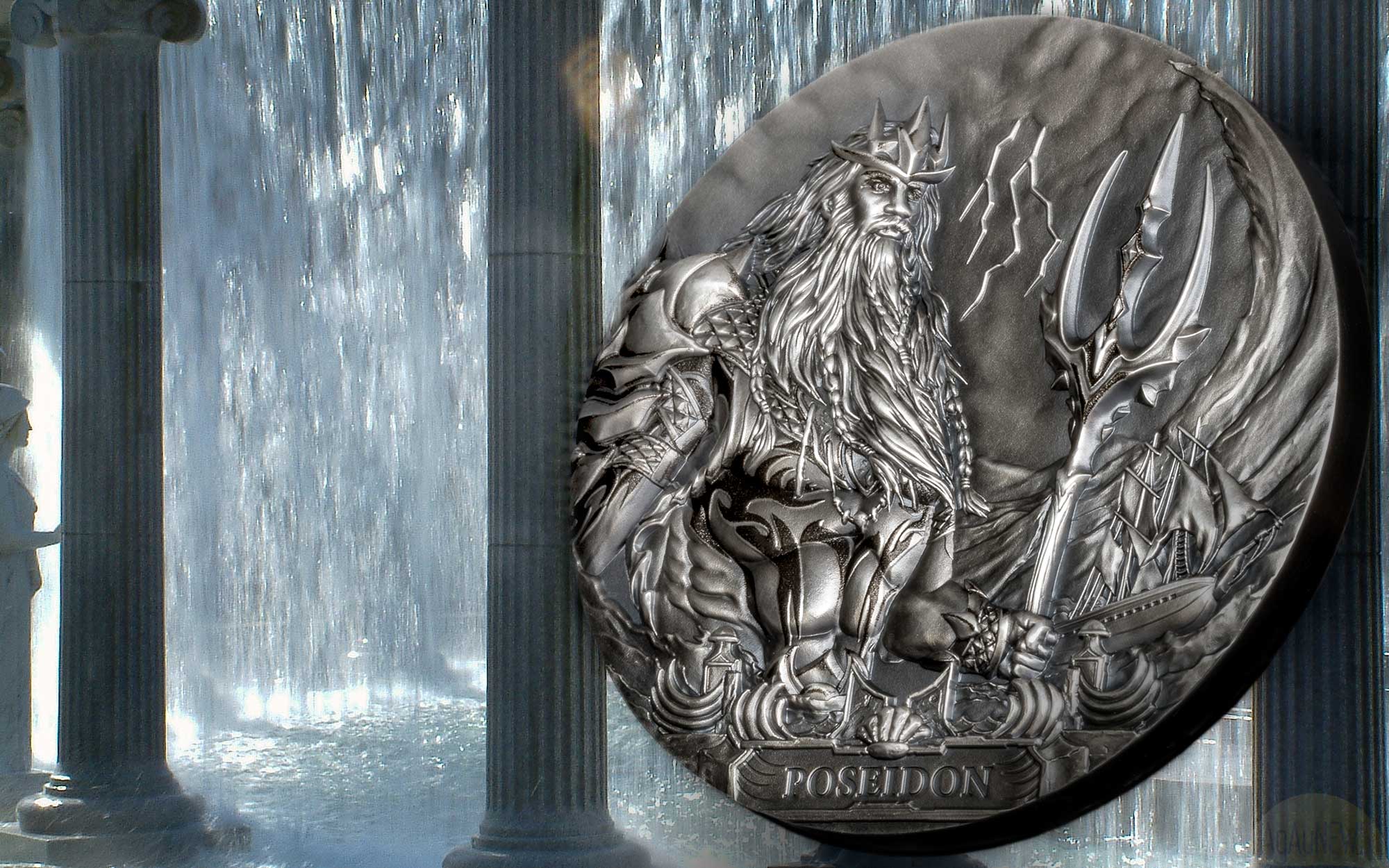

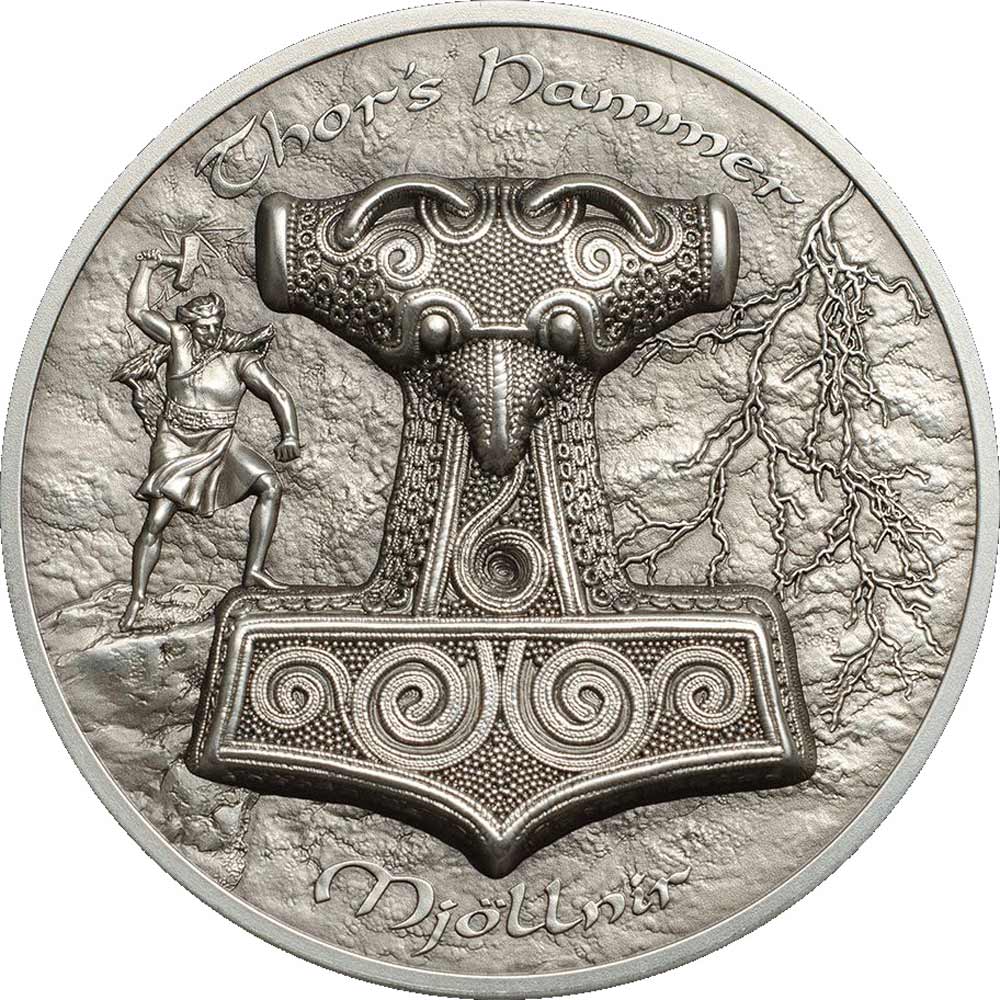

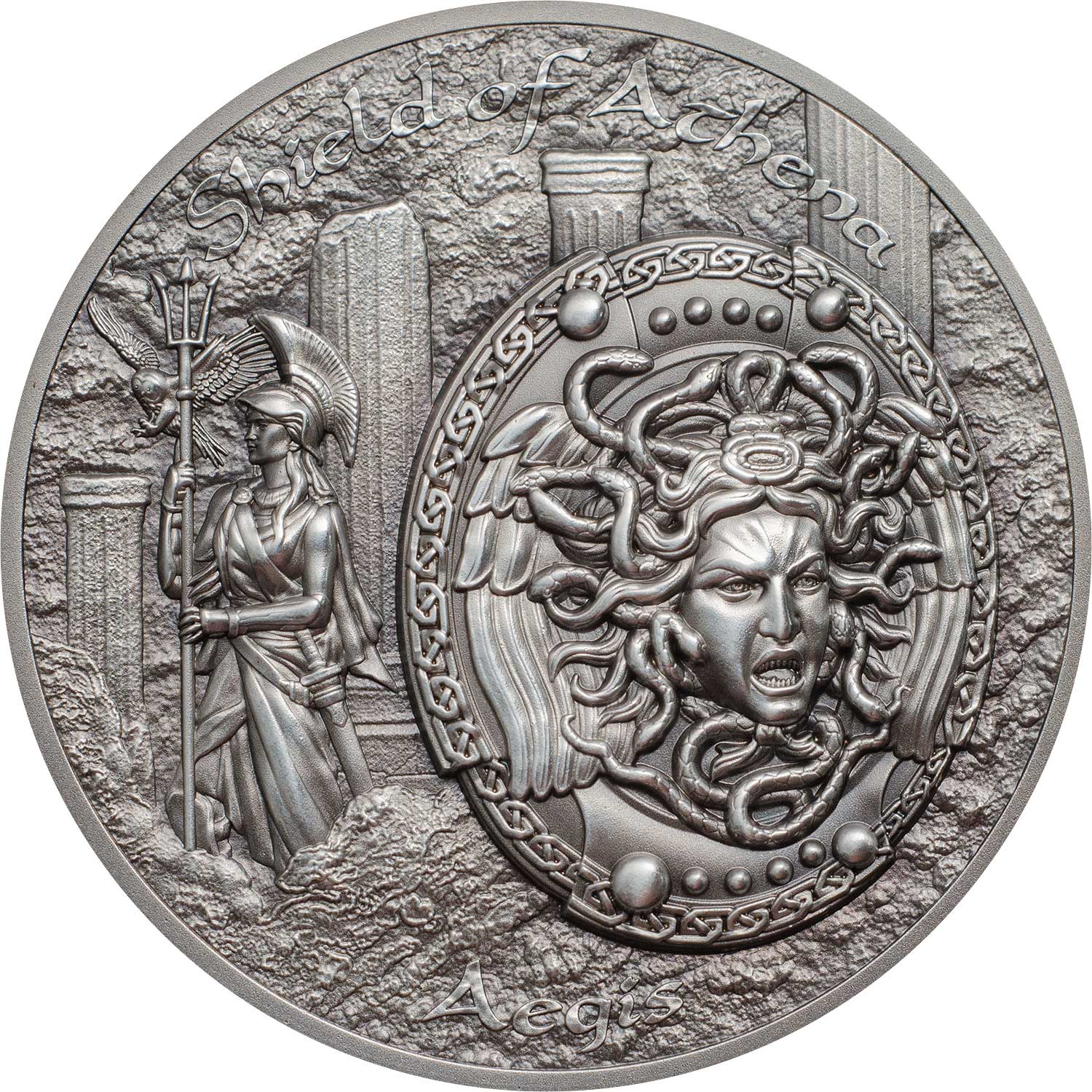

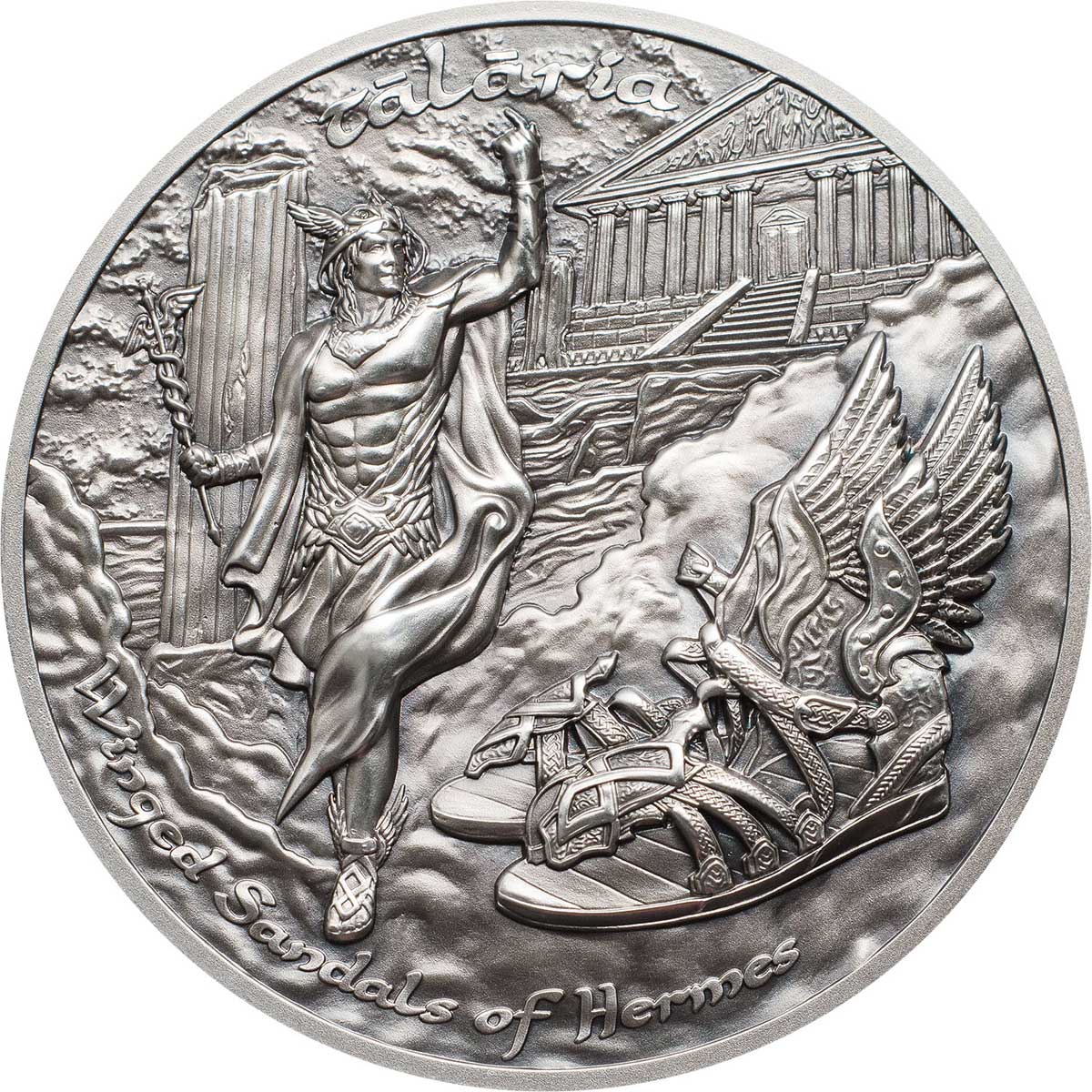


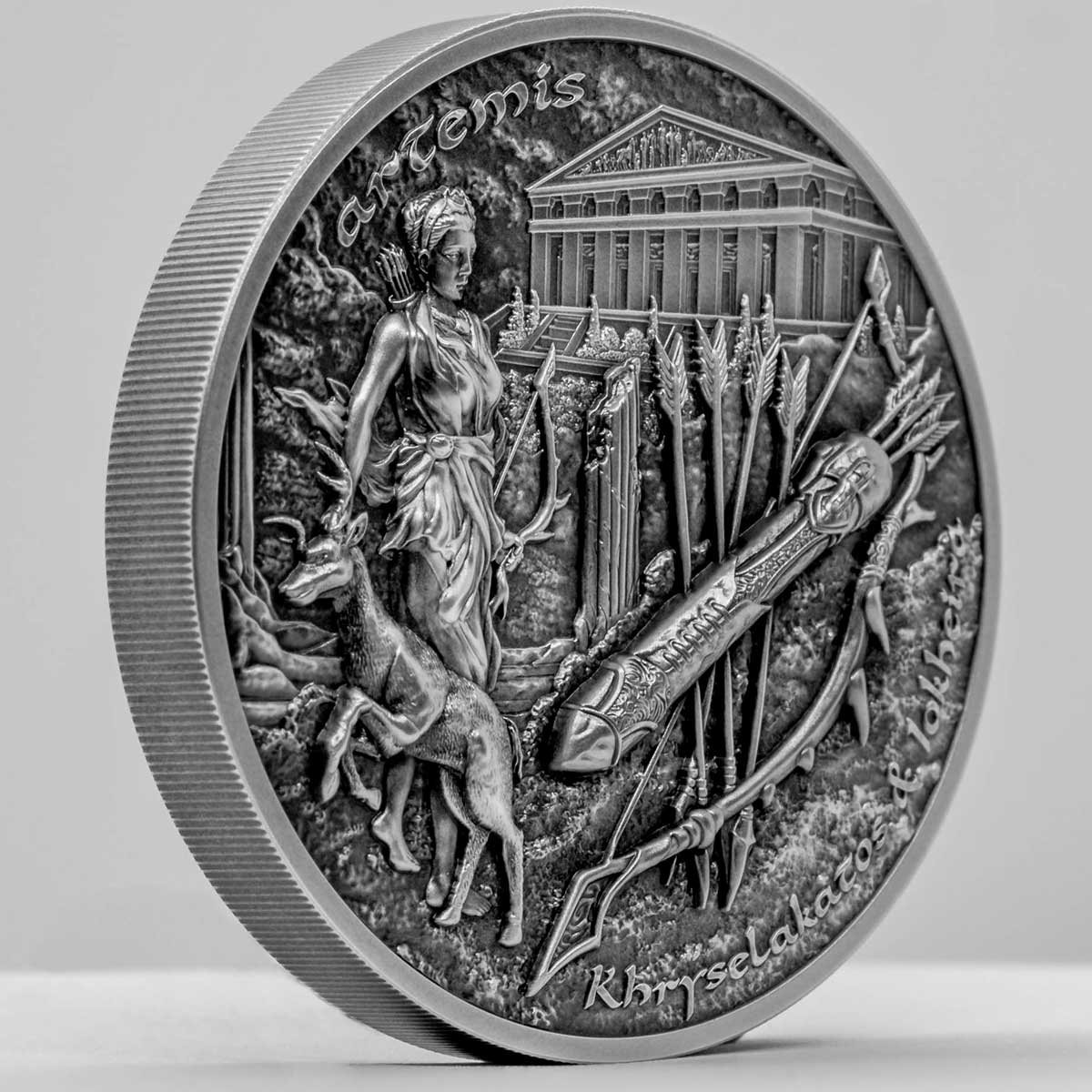
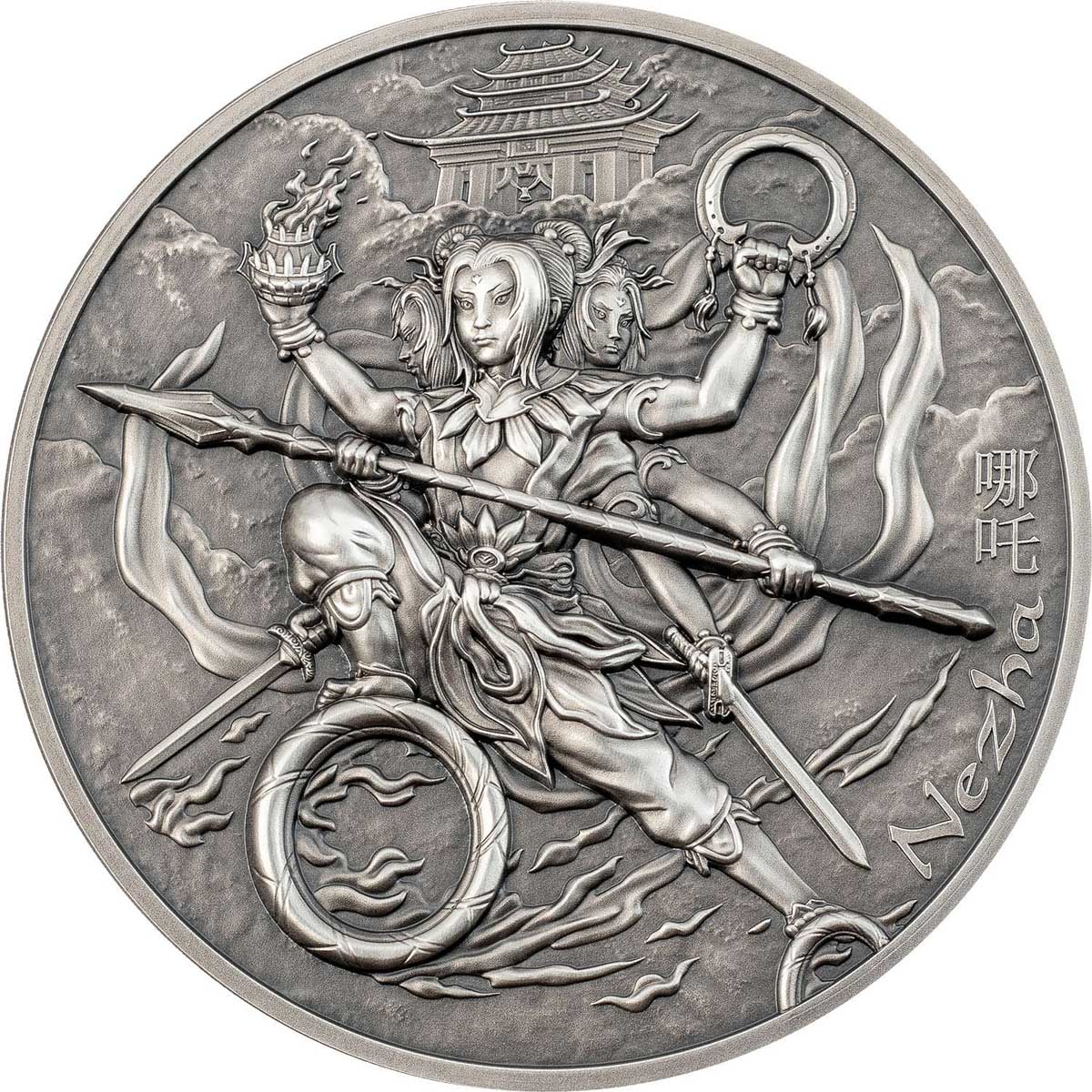

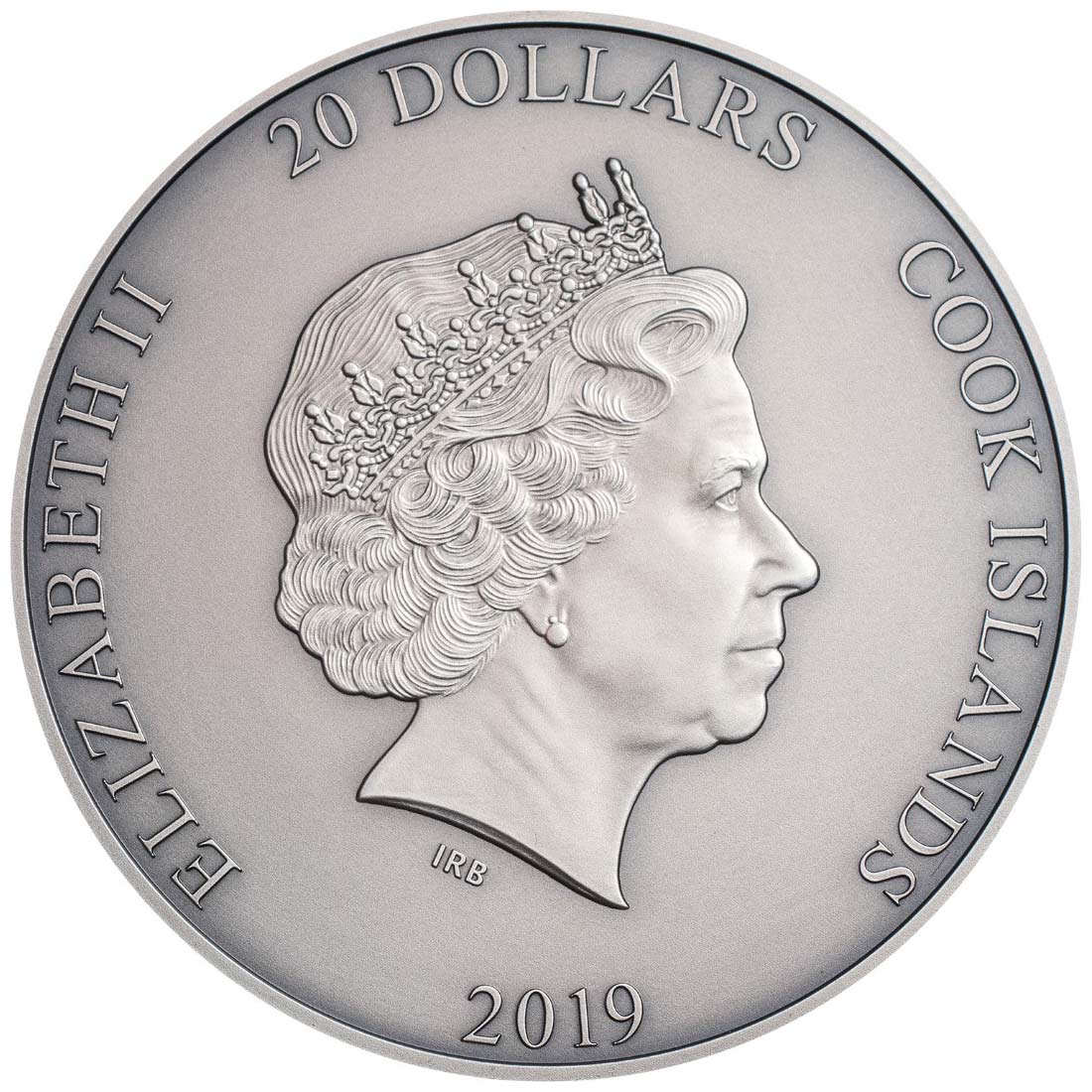

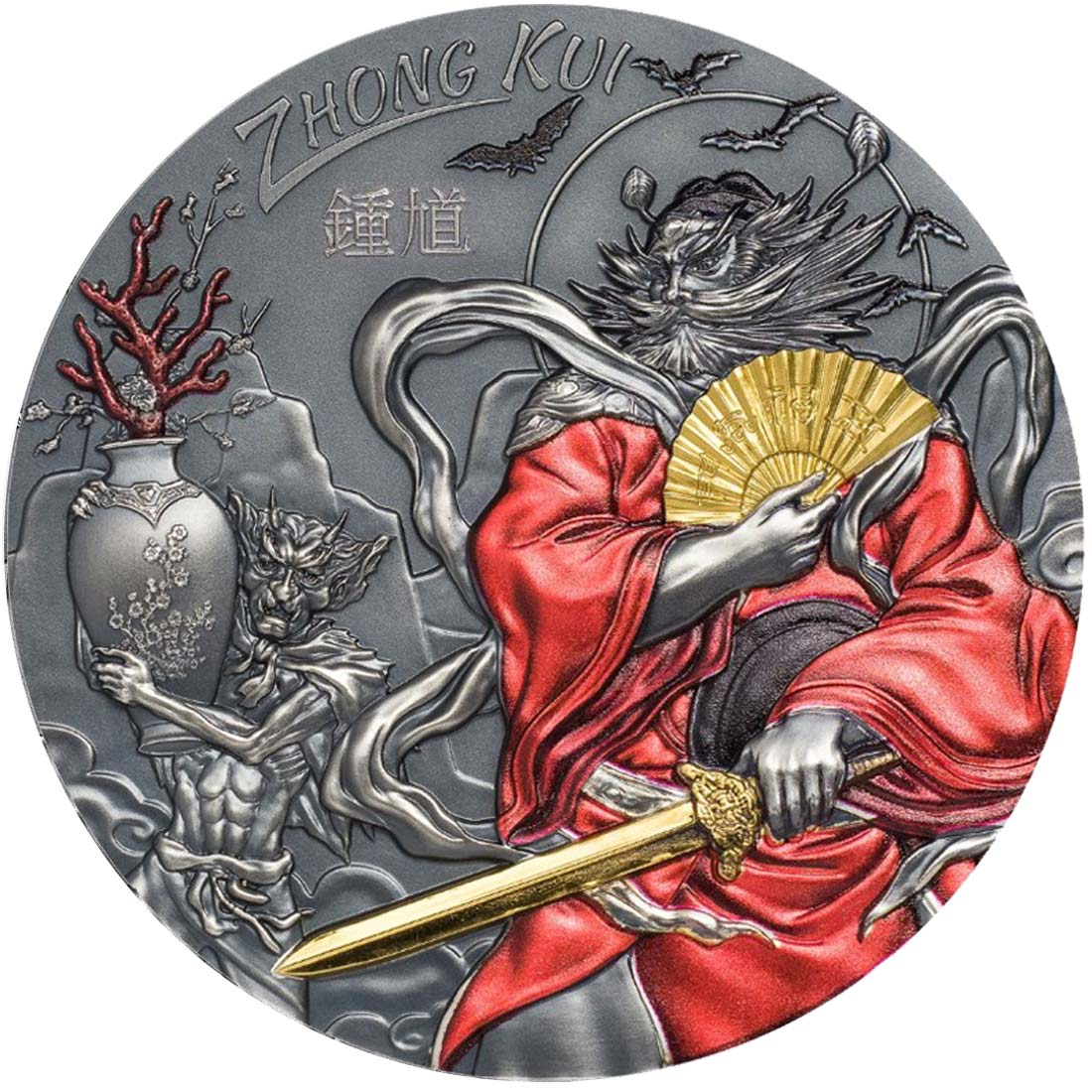
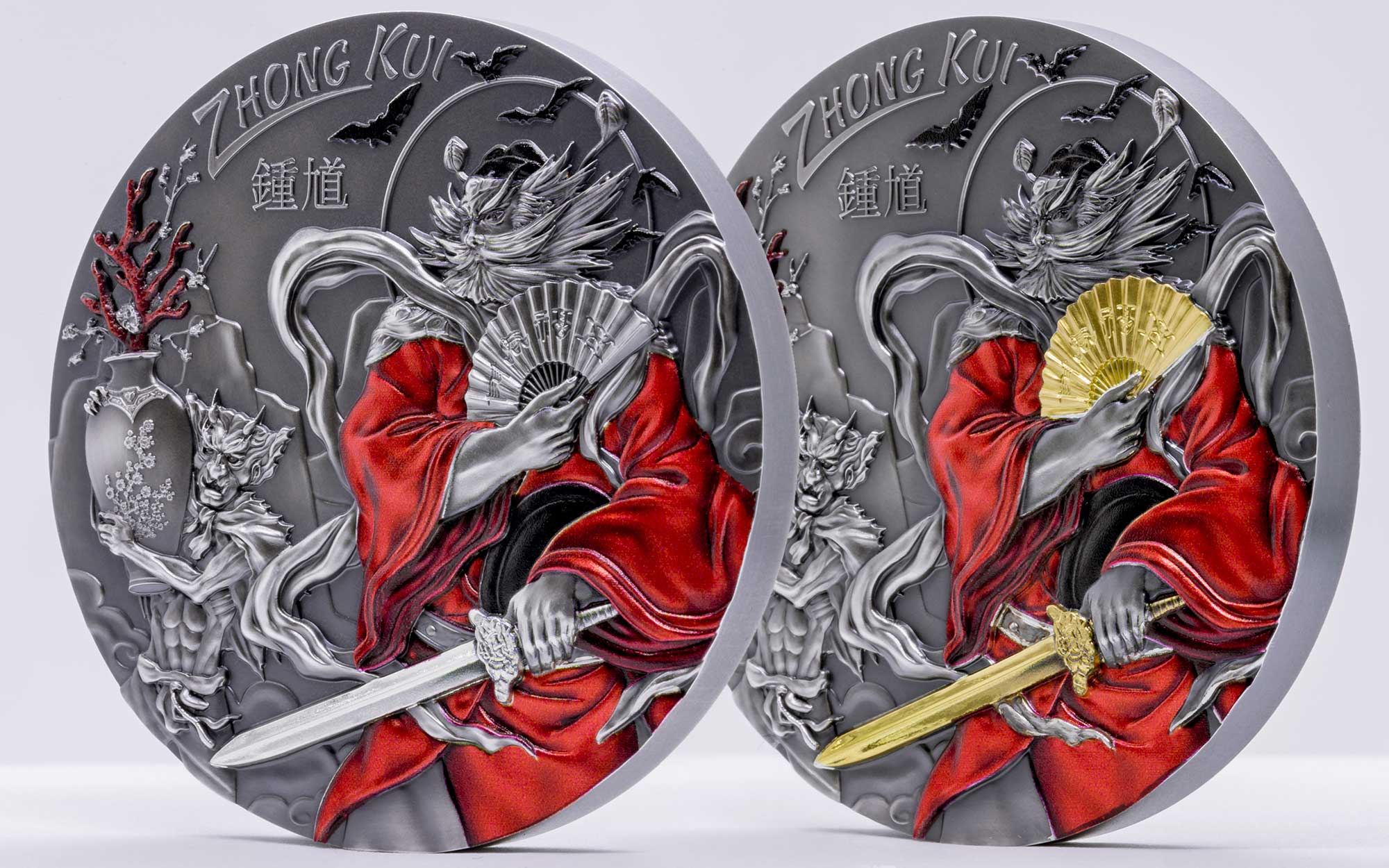

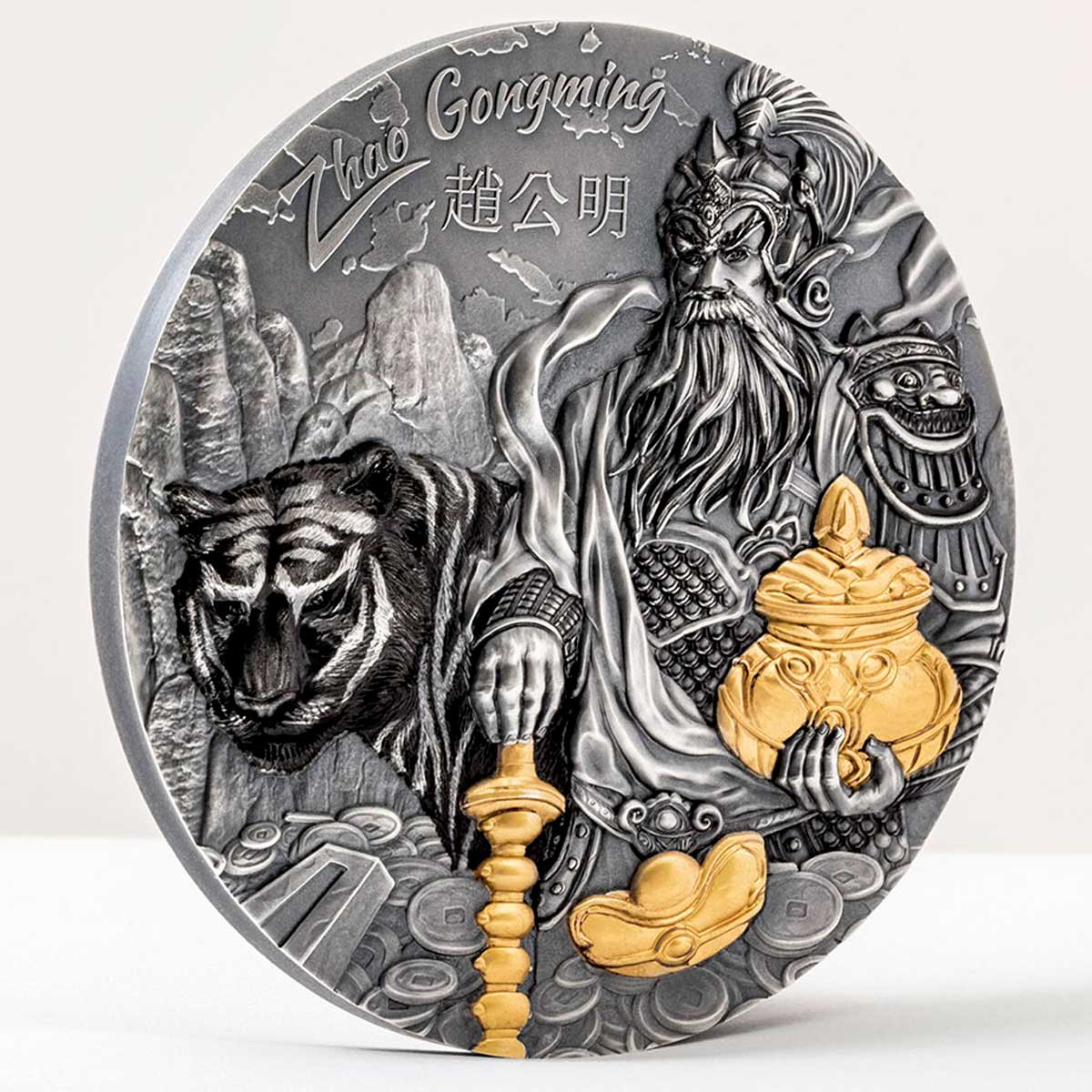
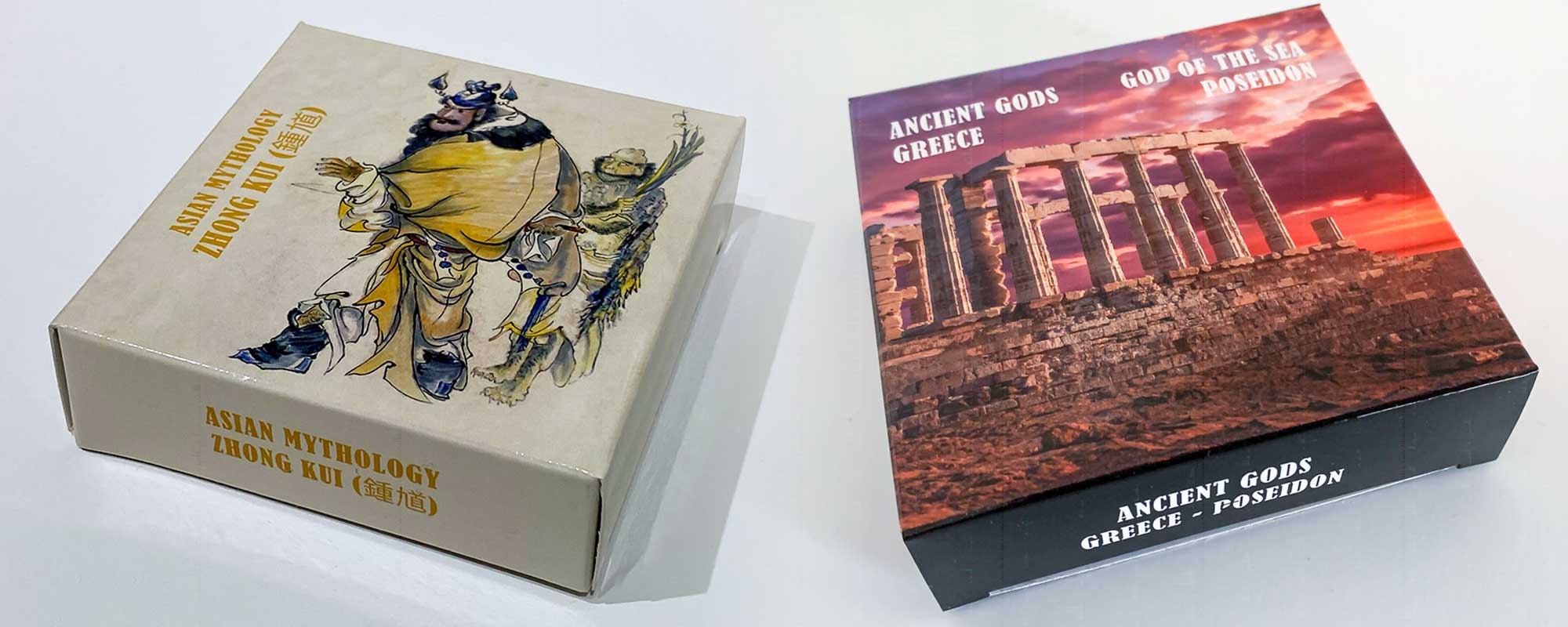
where can i buy those coins
Check out our WHERE TO BUY page. Just click the Numiscollect tab